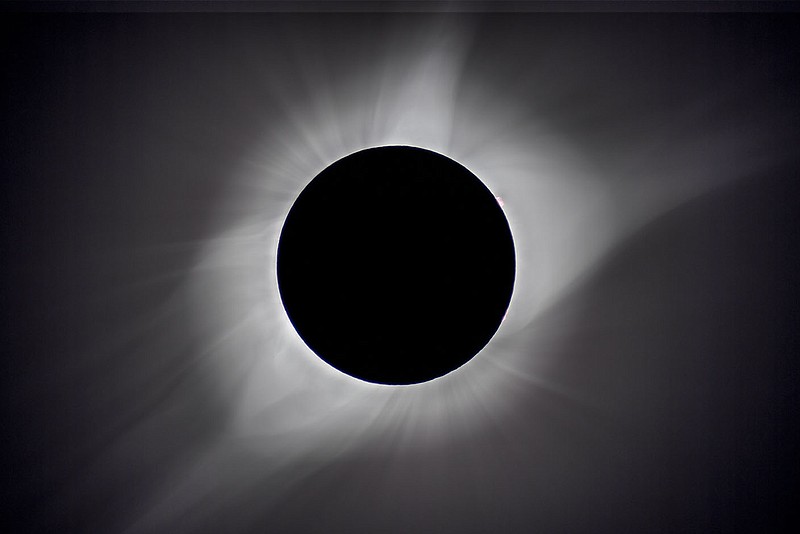Continued from last week:
On April 8, 2024, there will be a total eclipse of the Sun that will be visible near where most of the readers of this column live. NOW is the time to prepare for this event. In Arkansas, the path of the eclipse will pass over central Arkansas and will probably best be seen a bit east of Russellville.
Except when the Sun is totally covered by the Moon, you must wear eclipse glasses for observing pre-and-post totality events! During totality itself you may remove the eclipse glasses and view the Sun totally eclipsed, but do not remove the eclipse glasses at any other time! Your children will need to obey these instructions, too! Check to see that they have them on when looking at the sun! Eclipse glasses will be sold by many vendors. It is good to buy yours perhaps weeks before the eclipse, because there was a run on these the week before the 2017 eclipse and some couldn't get them.
For those planning to photograph the eclipse, you will need a solid tripod. You will want to take as many photos as you can, as fast as you can and a tripod will really steady things down. Many will try photographing the Sun with just the normal lens already on their camera. If you do this, the Sun's image will be very small. I would recommend a 300mm telephoto at a minimum. I will be shooting at more than 400mm from a site near Sulfur Springs, Texas. For those more advanced, I recommend a good equatorial mount that will track the Sun as the Earth turns. (For you folks, get there before night fall the day before so you can get good polar alignment.)
I think you will need a remote shutter cable too, so you won't shake the camera when shooting. You will be very excited and awestruck and the tripod will help. Be sure to get very careful focus -- focus on any sunspots that may be on the Sun's face. If there are no sunspots, use the edge of the Sun for sharp focus.
When I took my eclipse photos, I set my camera at ISO 200 and started shooting at 1/2000th second. I then worked back from there, ending with a 2.5 second exposure. I took more than 300 images in two minutes! However, for the final photograph, I only used 18 of those photos, which were then stacked by a professional scientific photographer from Caltech. I have included a photograph of 18 images, stacked one on top of the other, which shows the corona as best as I could get it.
If I had any success at all, it was because of careful and lengthy preparation! Things happened very fast and I needed to have a clear picture in my mind as to what I would do beforehand. A sort of panic can set in if you haven't planned and this is never happy.
I will have further news about this upcoming eclipse as it approaches.
Dr. David Cater is a former faculty member of JBU. Email him at [email protected]. The opinions expressed are those of the author.

